QinetiQ has won a £1.5m contract from the Royal Navy to trial the military effect of Banshee Jet80+ air vehicle off HMS Prince of Wales.
This will occur later in 2022 during a deployment to the US East coast.
QinetiQ say it will provide its experimentation expertise and Banshee Jet80+ air vehicles to support the Royal Navy’s future use of high-performance Uncrewed Aerial Systems (UAS) in Carrier Strike Group operations.
“The experimental trials, which are closely associated with the Navy’s Vampire Phase 1 programme, will test QinetiQ Target Systems’ Banshees in training and ISR scenarios, focussing on specific flight profiles and the optical recognition of assets to enable ‘friend or foe’ confirmation.
The Banshees provide the opportunity to rehearse operational procedures by emulating cruise missiles and enemy fast jets. With the addition of Electronic Warfare systems, the Banshee will not only stimulate the ship and aircraft radar systems, but also the threat warning systems, adding more depth and reality to the training that can be delivered. This will also demonstrate the potential use of Banshee in a decoy role.
In the ISR role, Banshee will prove its capability to deliver rapid visual identification of radar contacts to allow classification of threats. Integration of the MAPLE command and control software will demonstrate the ability to rapidly integrate this and a wider range of payloads delivering essential information to the War Fighter.”
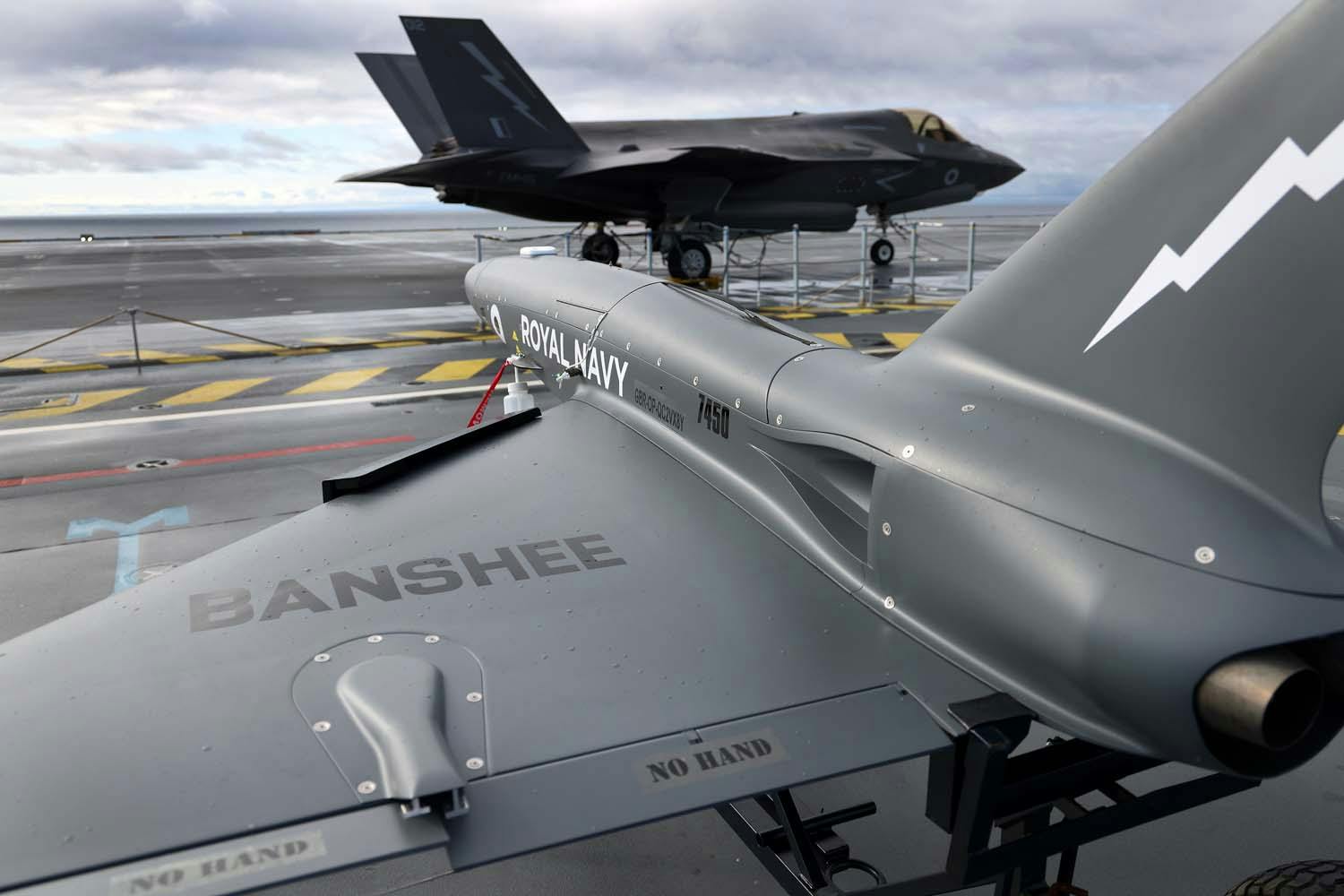
“The continued partnership with QinetiQ on Project Vampire is invaluable to support the evidence gathering as to how such capabilities can grow the lethality of our aircraft carriers,” said Colonel Phil Kelly RM, Head of Carrier Strike & Maritime Aviation, Royal Navy.
“These trials will see us using Banshee aircraft in sample ISR scenarios, a role that could be delivered rapidly in the operating environment. It will also show how Vampire can deliver our training needs to better prepare for realistic threats, ensuring that our training continues to remain close to real-life situations.”
Simon Cooper, Business Development Director UK Defence at QinetiQ added:
“Our participation in these important trials and the associated Vampire Phase 1 programme demonstrates the operational relevance of Banshee and QinetiQ’s ability to deliver pertinent operational training and experimentation outcomes for the Royal Navy. We’re incredibly proud of our partnership with the Navy and the opportunity to continue supporting them on their journey towards the Future Maritime Aviation Force.”
The Banshee Jet-80 drone was developed by Qinetiq, on their website they say:
“Developed from the successful Banshee target, this twin-jet engine powered version was developed using knowledge and experience gained whilst operating the single jet engine variant which entered service in 2010.
The current version is fitted with twin 40kg thrust gas turbine engines giving a total of 80kg of static thrust. This offers an increase in the maximum straight and level airspeed of up to 180metres/second. The use of an auxiliary fuel tank ensures that endurance is similar to that of the single engine version with a typical mixed throttle mission time in excess of 45 minutes.
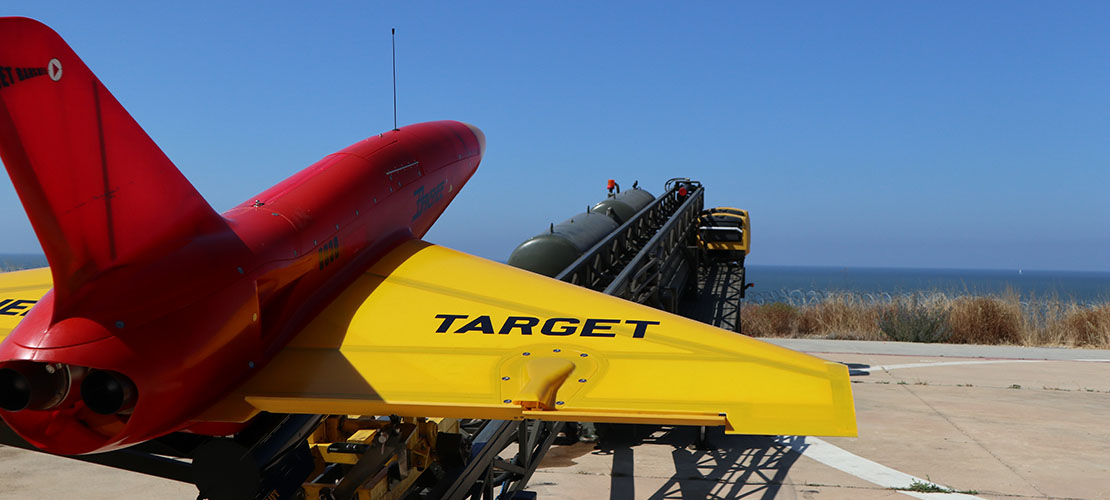
When fitted with the patented Hot Nose the target provides a forward and side-looking IR source with output in Bands I, II and III, whilst the jet engines provide a realistic rearward looking IR signature. All other well proven augmentation devices traditionally available to Banshee can be fitted to this latest twin jet engine derivative.”


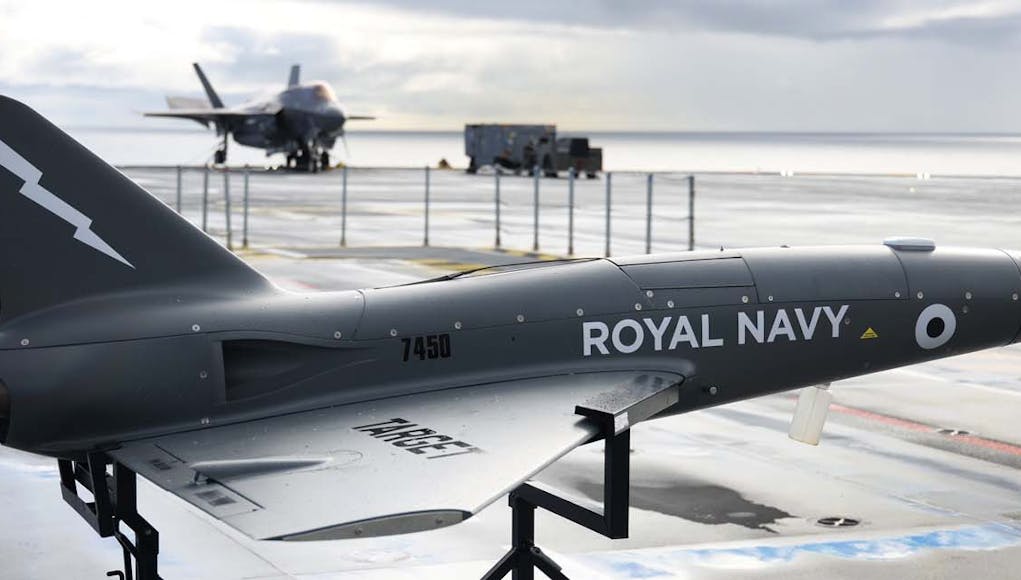
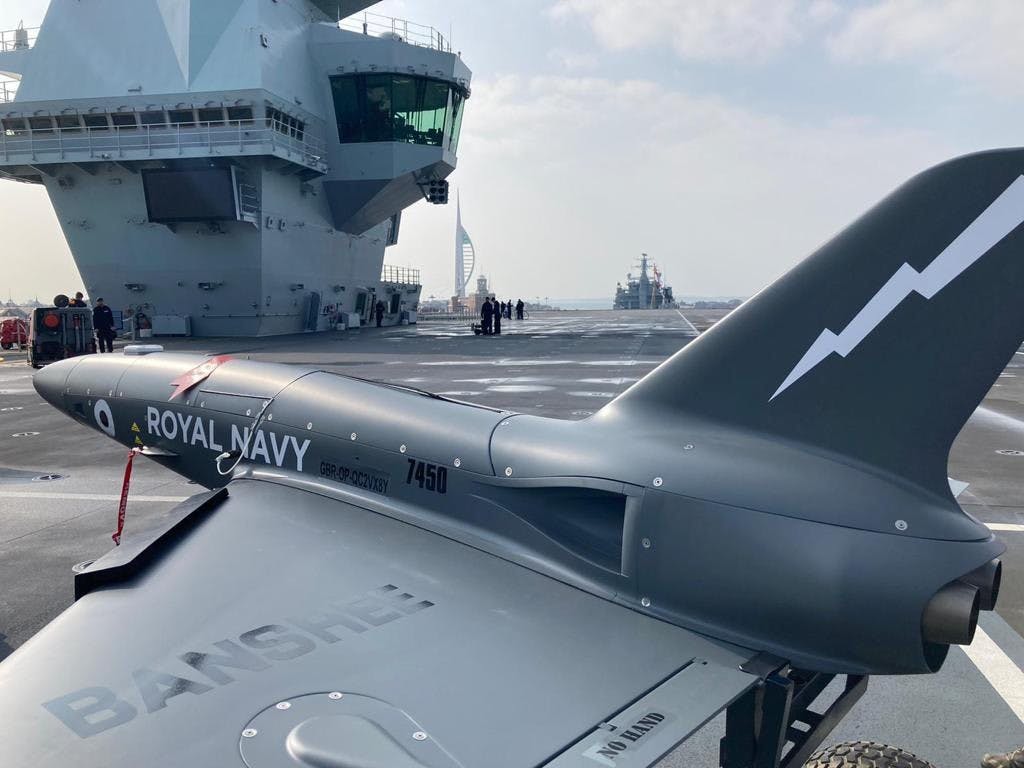
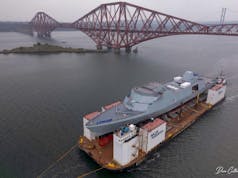

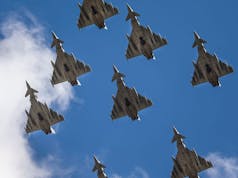
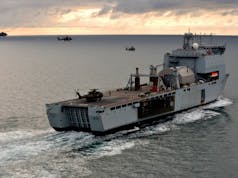
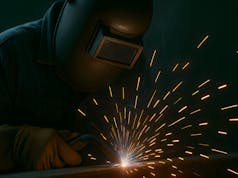

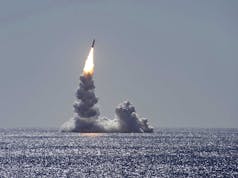

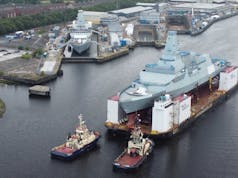


With the glacial progress of F35. About which we have zero control. We need progress on Carrier compatible UAV’s. The best option would be to use the Type 31 programme model an off the shelf or near off the shelf system needing the least modification for Carrier use and with capacity for modification and upgrade in software as the tech advances. What that system would be is far beyond my knowledge of UAV’s to say. There are people on this site who are far more qualified to comment than me. But so long as the above needs are met we should go with it and as a matter of urgency.
.
Maybe RN can get F-18 for their carriers now that Boeing tested F-18 with sky jump for the much nimble Indian carrier.
Brand new Super Hornets are virtually the same up front cost as the F35. Cost per flight hour is less but carrier qualification certification is much greater on a cats n traps carrier than a STOVL one so at best you’d save little. That means the FAA would have the same problems funding an F18 fleet as they do with F35. The problems with weapons integration and certification would still be an issue although probably not as severe as with F35. For those small gains we’d gain a fighter a generation behind the F35. Even if we can trust Boeings claims it would not be a solution to our problems.
It would be only a stop gap if the shtf in Taiwan.
Hi JayR,
Possibly but given that the range of the Banshee is given as >100km (54nm), so not huge, and an endurance of 40 to 45minutes I would suggest that it is more likely to be small surface targets that they are identifying, perhaps small boats..?
There is also the air safety rules to consider. I would be very surprised if the CAA or FAA would allow a Banshee to intercept a civil airliner for a visual ID. May be a Hawk or other military aircraft that can get out of the way if needed and only then under very strict specific safety procedures written up for a trial. The last thing you’d want is a coming together of a manned aircraft and a Banshee, seriously bad press…
Cheers CR
I imagine that the lack of F35Bs on the two RN aircraft carries is a foretaste of what will eventually afflict the US Navy. The next generation of fighter aircraft will be so expensive (especially the F22 replacement for the US Airforce) that the US Navy / Airforce will only be able to afford limited numbers, with the volume being made up by cheaper and less capable drones (for intel, EW, fuel tankers, and as bomb trucks). On this basis, drones are inevitable. The big challenge is learning how to fit them into existing operations.
The only way the drone is cheaper is if it is less complex?
Which is where single function, to reduce payload, could really help.
The AAR drones particularly don’t have to be stealthy unless the plan is for them to loiter at the edge of radar cover to extend the F35B.
Simpler isn’t worse either: could be better as a simpler platform is more reliable.
Hi SB,
I agree.
There is a good argument that we should go back to single role aircraft i.e. the right tool for the job concept. Trying to do everything in one platform means compromise and complexity which means cost and risk… See F35 for a good example. Multi-role can did work in some circumstances as demonstrated by the Mosquito, but that was an exceptional aircraft and simpler times…
I would also point out that a big cost of the aircraft is the stuff designed to keep the aircrew alive and informed of what is going on around them. Take that out and put it on the ground and the bit that is most likely to get blown away is cheaper and more easily replaced. Of course, fast jet pilots ain’t going to like that idea but hey, how many people in industry have lost their jobs to a machine?
Drones are definately the way to go, even if it is as part of a mixed fleet to start with.
Cheers CR
A big part of the logic for multi-role platforms in todays world is value for money. Paying £100m for a single multi-role fighter sounds terrible, until you consider that buying separate interceptors and bombers probably costs more upfront and almost certainly costs more to support in service (double the pilots, separate training and logistics systems, etc).
Then you look at the mono-role aircraft and see that one of them is getting barely any use, because high-end warfighting doesn’t come along much. That’s a lot of taxpayer money being spent on a capability that we definitely need, but don’t generally use.
Suddenly the compromise and complexity of a multi-role aircraft looks pretty good, because you can justify it a lot easier to the Treasury if the kit is going to see regular use.
Having said all that, I think you could well be right about drones. Removing the big common cost to all aircraft (the pilot and life support systems) makes developing aircraft around specific roles look much more attractive.
Maybe something more along the lines of a scaled up Storm Shadow cruise missile instead of a scaled down full size fighter/bomber? I think you’re right about simplicity… building a range of drones, each one designed for a specific task (or using swappable modules like the Boeing Ghost Bat).
The tech is there to make a drone airframe and power it to be like a manned platform. Maybe it’s the other parts that require more work. If it’s to mostly be autonomous that is a big job. For easier stuff it simple enough but nothing so far can manage the skills of a human brain for dealing with complex changing situations.
If that can be mastered that’s a game changer.
Just now things like take fuel and fly a track over there for 3 hours are manageable. Or take this bomb and drop it here then come back.
Maybe 2 seat jets will be needed so the back seat can assist the drones when needed.
It looks like Quinetic have made some pretty good enhancements to the Banshee as a target drone and are searching round for other uses for it but are handicapped by it being optimised for drone use, ruling out many of what might be regarded as ‘normal’ UAV tasks.
Its being used in a similar way that Hawk and Falcon Aircraft where used to provide Fleet Air Defence target simulation.
A number of homing head simulators and search radar simulators could be fitted to tickle the EW kit . After that it is SOP time on the ships for calling the actions to be taken
I think you have misconstrued what the Banshee will be used for. It is a target drone and nothing else. It can be fitted with an IR and an RF emitter that makes it mimic other aircraft or missile threats. The Banshee does not have its own EO turret or active radar.
With the current peacetime rules of engagement you must make a positive identification of an “aircraft” to determine if it is friend or foe, before you can take any action against it. Doubly so if it is not transmitting either IFF or AIS codes, as it may have a fault with the system. The Banshees will be used to test how the ship’s combat information centre and the task group as a whole reacts to unknown threats. Having the Banshees onboard means the ship isn’t just restricted to operating within one of the designated ranges around the UK. The ship/task group can conduct realistic threat scenarios when underway to exercises or on round the World tours etc.
The Banshee has a very low radar cross section (RCS). When flying it will have a radar repeater and reflectors fitted to boost its RCS. It can be a very hard target to detect and track and is very indicative of a 5th generation aircraft threat. It can also carry its own target drone called the Rattler. This is a small rocket powered drone that flies supersonically that can mimic sea skimming and high diving missile threats.
See link:
QinetiQ Rattler GAL-ST Aerial Target
The threshold requirement for Vampire was for threat simulation and a payload of 25kg, but the objective requirement was
“Fit to receive, or clear development pathway to fit:” dual payload of 100kg, including MPU5 radio, AESA radar and EO/IR device.
I think they are pushing Banshee out of its comfort zone to see what it can really do.
Have we got a method of recovering each drone after launch or is it still recovered from the drink after it runs out of fuel.
Somewhat not OT.
https://www.shephardmedia.com/news/air-warfare/farnborough-2022-iai-developing-queen-elizabeth-class-aircraft-carrier-capable-heron-uas/